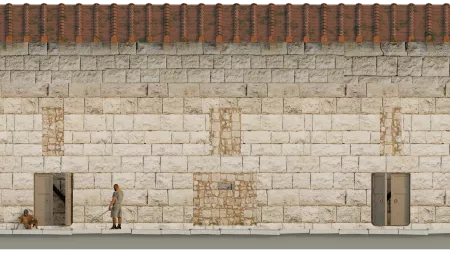Corinth, Greece – Disturbing ancient graffiti has revealed the existence of a Roman prison in Corinth, offering a rare glimpse into the brutal realities of incarceration in antiquity.
The prison, described as a “lawless place” in the inscriptions, dates back to the Late Antique Period (4th-6th centuries AD) and was built within the ruins of the city’s Roman forum.

The discovery, published in the journal Hesperia, was made by Dr. Matthew Larsen of the University of Copenhagen, a leading expert on ancient Mediterranean incarceration. Larsen was initially drawn to the site due to local lore referring to the area as “Boudroumi,” a Turkish word for “dungeon.”
The prison itself consists of a central room, known as the “boudroumi,” and a row of 15 smaller rooms, formerly shops, all opening onto the bustling forum. This public location underlines the stark reality of punishment in Roman society.

The key to identifying the site as a prison lies in the numerous graffiti etched onto the floor tiles. These inscriptions, believed to be the work of prisoners, offer a chilling chorus of pleas for mercy, cries for release, and curses upon their captors.
Some of the most poignant examples include:
- “Whoever loves, let him flourish. Let him perish who knows not love.”
- “Lord, help your servant.”
- “God, no mercy for the one who put me in chains.”
Beyond pleas for help, the graffiti also depicts games boards, a soldier figure, and messages expressing love and longing for women outside the prison walls. This combination of despair and hope paints a poignant picture of life behind bars in Roman times.
According to Larsen, finding a site so clearly identifiable as a prison is incredibly rare. “The archaeological remains of prisons have proven exceedingly elusive and hard to identify with certainty,” he explains.

The Corinth prison graffiti provides invaluable insight into not only the physical conditions of Roman prisons but also the emotional and psychological toll on those confined within. This discovery challenges the perception of prisons as a modern invention and sheds light on a darker chapter of ancient Roman history.
